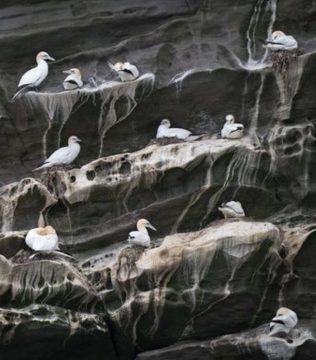Courtney Sexton in Smithsonian Magazine:
 When Don Lyons, director of the Audubon Society’s Seabird Restoration Program visited a small inland valley in Japan, he found a local variety of rice colloquially called “cormorant rice.” The grain got its moniker not from its size or color or area of origin, but from the seabirds whose guano fertilized the paddies in the valley. The birds nested in the trees around the dammed ponds used to irrigate the rice fields, where they could feed on small fish stocked in the reservoirs. Their excrement, rich in nitrogen and phosphorus, washed into the water and eventually to the paddies, where it fertilized the crop.
When Don Lyons, director of the Audubon Society’s Seabird Restoration Program visited a small inland valley in Japan, he found a local variety of rice colloquially called “cormorant rice.” The grain got its moniker not from its size or color or area of origin, but from the seabirds whose guano fertilized the paddies in the valley. The birds nested in the trees around the dammed ponds used to irrigate the rice fields, where they could feed on small fish stocked in the reservoirs. Their excrement, rich in nitrogen and phosphorus, washed into the water and eventually to the paddies, where it fertilized the crop.
The phenomenon that Lyons encountered is not a new one—references to the value of bird guano can be found even in the Bible, and an entire industry in South America grew around the harvesting of what many called “white gold.” What is new is that scientists have now calculated an exact value for seabird poop. This week, researchers published a study in Trends in Ecology and Evolution that estimates the value of seabird nutrient deposits at up to $1.1 billion annually. “I see that [many] people just think you care about something when it brings benefits, when they can see the benefits,” says Daniel Plazas-Jiménez, study author and researcher at the Universidade Federal de Goiás in Brazil. “So, I think that is the importance of communicating what seabirds do for humankind.”
More here.
